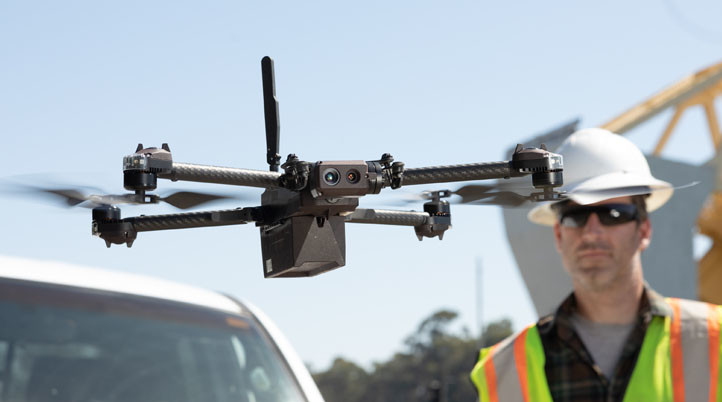As part of its long-term vision since it was founded in 2014, the U.S. drone manufacturer Skydio announced the new X2 family of drones for enterprise and government customers. Along with that, the company also announced it has raised $100 million in Series C funding led by Next47 with participation from Levitate Capital, NTT DOCOMO Ventures, and existing investors including Andreessen Horowitz, IVP, and Playground, to accelerate product development and go-to-market expansion in enterprise and public sector markets.
While Skydio’s initial focus was on consumer markets with the $999 Skydio 2 (S2), various enterprises and government agencies saw the potential of Skydio Autonomy, the AI-powered brain built into every Skydio drone. The S2 has helped Civil Air Patrol, Ohio Department of Transportation, North Carolina Department of Transportation, Southern Company, Chula Vista PD, Japan Infrastructure Waymark, and Ware to simplify data collection in inspection, search and rescue, situational awareness, and emergency response use cases. According to Adam Bry, CEO at Skydio, with whom we have discussed how Skydio delivers value with automated drone flights, this new expansion beyond the consumer market is an opportunity to clarify the company’s purpose to make the world more productive, creative, and safe with autonomous flights.
Designed, assembled, and supported in the USA, the Skydio X2 features a ruggedized airframe with folding arms for easy “pack and go” transportation, a thermal camera, and up to 35 minutes of flight time. Equipped with six 4k navigation cameras for 360-degree obstacle avoidance, and a dual-sensor payload that includes 12MP color and 320x256 LWIR sensors, the X2 includes Skydio Autonomy and a new enterprise-grade Skydio Enterprise Controller with a built-in touch screen, glove-compatible controls, and a new wireless system to extend range up to 6.2 kilometers.
In addition to the new drone, Skydio also introduced X2 and S2-compatible Enterprise Skills to simplify inspections and situational awareness workflows: Skydio Autonomy Enterprise Foundation, Skydio 3D Scan, and Skydio House Scan.
“Flight autonomy, while essential, is merely the starting point,” Skydio COO Mark Cranney wrote. “The next phase of our strategy is to build on it as the foundation of a broader integrated enterprise stack that leverages drones as powerful edge computing devices in combination with advanced AI capabilities — we like to call them Skills — to automate end-to-end business processes.”
Skydio’s Autonomy Enterprise Foundation focuses on flight safety and efficiency for everyone from novice to expert operators with three new features:
- 360 Superzoom lets pilots see in all directions while flying by blending the drone’s seven onboard cameras and provides up to 100x digital zoom with high-quality video resolution and electronic image stabilization, providing situational awareness at 360 degrees.
- Precision Mode allows pilots to fly in tight spaces and to get the job done faster, by enabling high precision response to controller inputs and to safely fly near obstacles (0.5 meters).
- Vertical View, combined with Skydio Autonomy’s Obstacle Avoidance technologies, allows pilots to focus on overhead inspection targets, instead of dedicating their inspection camera to avoiding obstacles.
Powered by a new real-time visual 3D reconstruction layer built on top of Skydio Autonomy, Enterprise Foundation 3D Scan was designed for autonomous inspection of industrial structures, such as bridges, building facades, energy infrastructure, accidents, and crime scenes. It enables a fully automated, structure-agnostic process that does not require any prior knowledge of the inspected structure and can operate in GPS-denied environments or without an internet connection.
In partnership with EagleView, Skydio House Scan automatically performs context-aware 3D scanning of residential properties, allowing insurance inspectors to capture more precise data, efficiently and safely.
Available in Q4 2020, the Skydio X2 will come in two versions: Skydio X2D, built to meet the Short-Range Reconnaissance (SRR) requirements for the U.S. Army, for performing reconnaissance, search and rescue, and security patrol missions; and the Skydio X2E, optimized for enterprises, first responders, and civilian agencies for better situational awareness and for inspection of infrastructures such as buildings, bridges, power plants, power stations, railyards, and more.




.png.small.400x400.png)











Comments